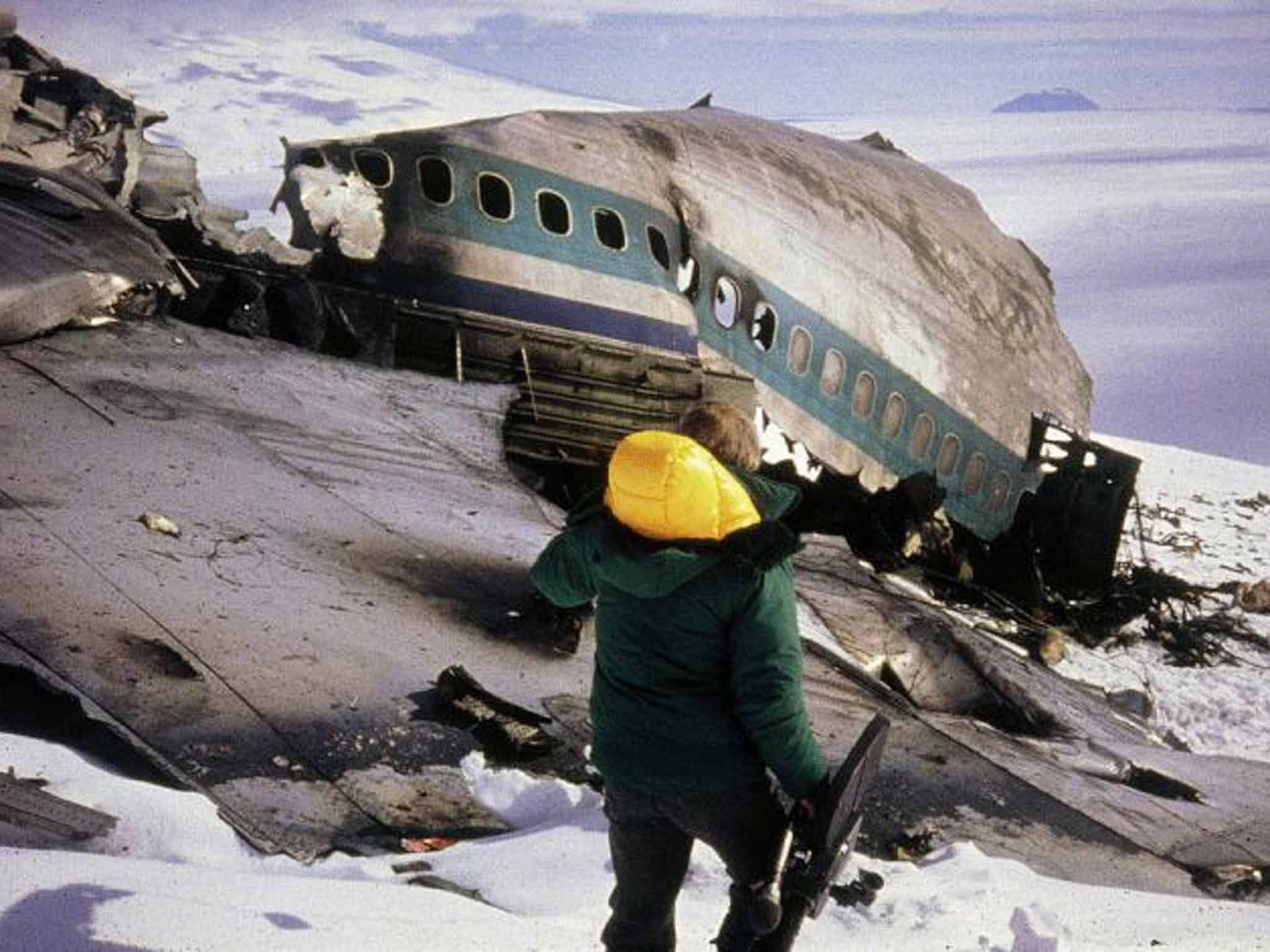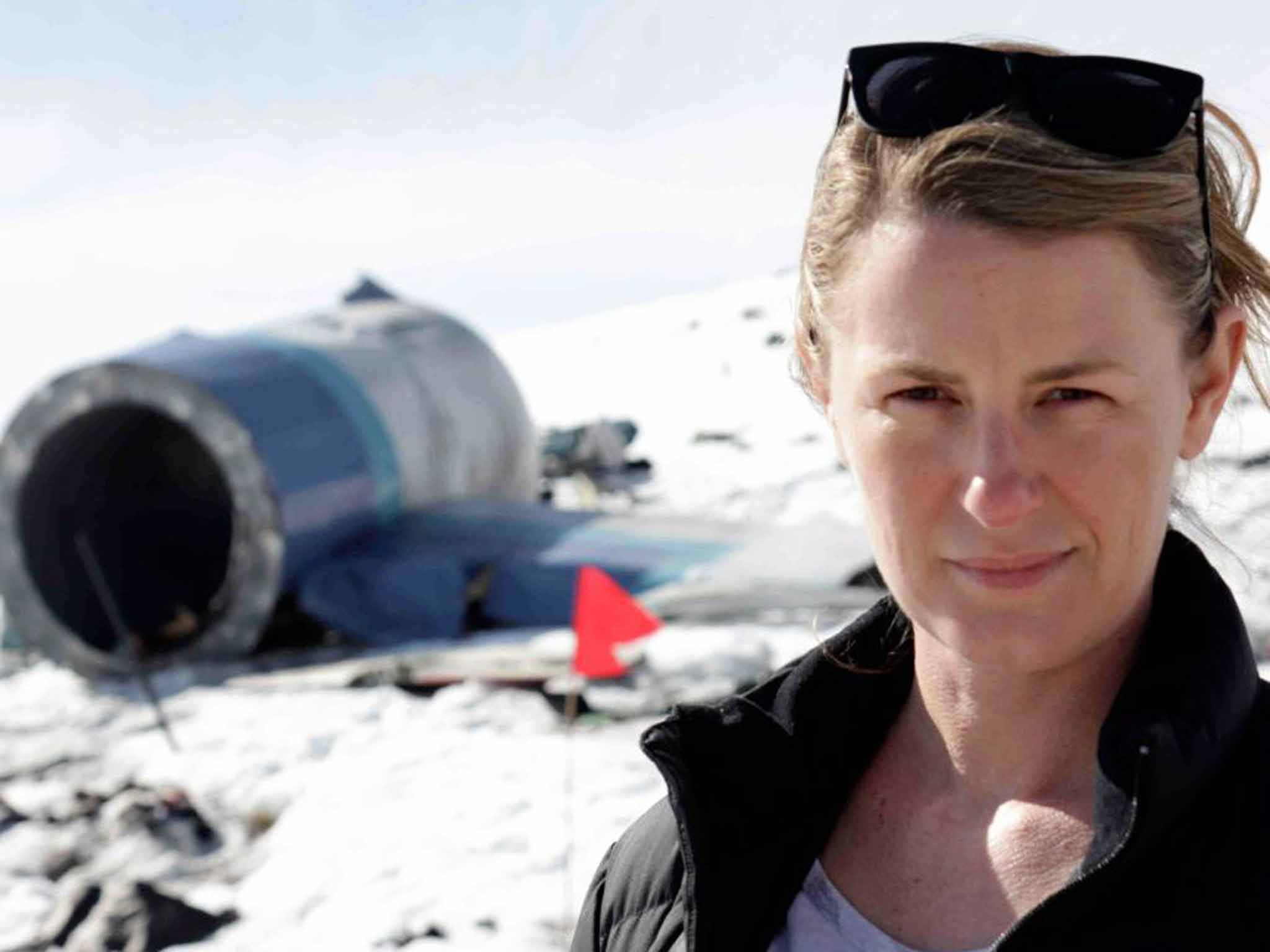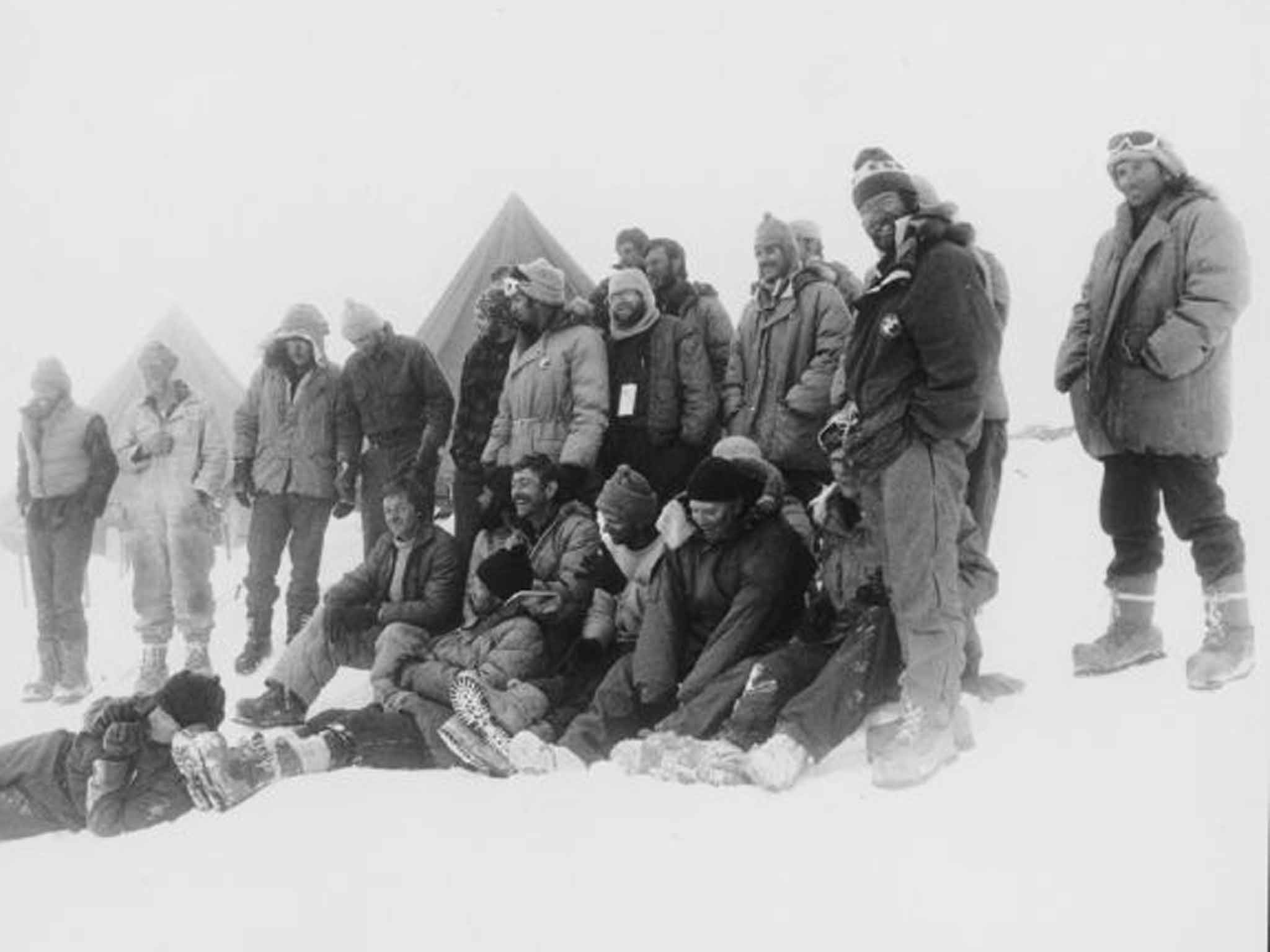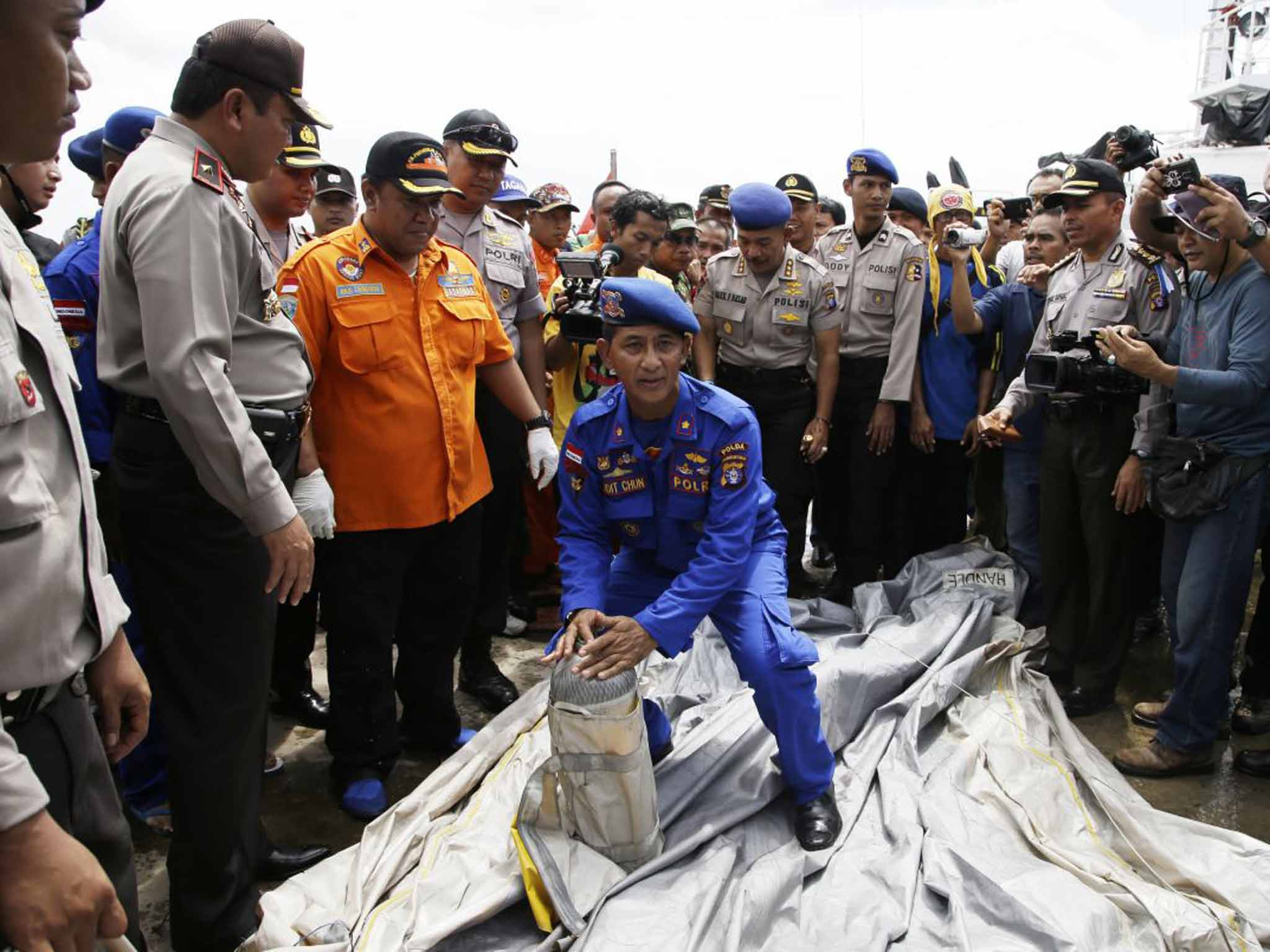AirAsia flight QZ8501: The pioneering work of the Erebus crash investigators in 1979 is still being used today
As the mission to recover bodies and data from the AirAsia flight continues, Lena Corner talks to the crash investigator who led the team during the 1979 Mount Erebus air disaster

Your support helps us to tell the story
From reproductive rights to climate change to Big Tech, The Independent is on the ground when the story is developing. Whether it's investigating the financials of Elon Musk's pro-Trump PAC or producing our latest documentary, 'The A Word', which shines a light on the American women fighting for reproductive rights, we know how important it is to parse out the facts from the messaging.
At such a critical moment in US history, we need reporters on the ground. Your donation allows us to keep sending journalists to speak to both sides of the story.
The Independent is trusted by Americans across the entire political spectrum. And unlike many other quality news outlets, we choose not to lock Americans out of our reporting and analysis with paywalls. We believe quality journalism should be available to everyone, paid for by those who can afford it.
Your support makes all the difference.In November 1979 Air New Zealand flight 901 set off on a sightseeing trip over Antarctica. It was an era when flights over inhospitable Polar regions were a relatively new and exciting breakthrough in airborne tourism. The DC-10, with 257 passengers on board, took off from Auckland. The plan was to fly to Christchurch making a long, low detour over McMurdo Sound – the land of Captain Scott, Ernest Shackleton and the great history of Antarctic exploration.
The plane took off in the morning and was due to land at about 5pm, but a couple of hours beforehand radio contact was lost. By 8pm, knowing that fuel supplies would have run out, it was acknowledged that the plane must have come down – no one knew how or where. That night, virtually the entire population of New Zealand stayed up, glued to their radios, desperate for news.
Some time after midnight it was announced that the wreckage had been sighted on the slopes of Mount Erebus – an active volcano and the second highest in Antarctica. The plane appeared to have flown into its side. Everyone on board was presumed dead. It was to be the fourth biggest air disaster the world had ever seen. And back then, in a tranquil country of just three million people, the shock was universal.
"It was a huge, huge disaster for New Zealand. That many people dying in a country so small, particularly in the 1970s, it resonated with everyone," says filmmaker Charlotte Purdy, whose uncle, a crew member, died in the crash. "The whole country was talking about six degrees of separation. Everyone knew someone who knew someone on board."

Inspired by her uncle's story, 35 years after the crash, Purdy has made a film entitled Erebus: Into the Unknown, which is due to open in the UK this Friday. In scenes eerily reminiscent of those played out on our own TV screens this past week when AirAsia flight QZ8501 disappeared between Indonesia and Singapore, Purdy's film opens with original airport footage of officials carefully ushering family and friends into a side room, knowing that the loved ones that they were there to meet would never be seen again.
It quickly became apparent that it was up to the New Zealand authorities to assemble a team to bring back the bodies. This was an era before organised search and rescue teams existed, so they cast around amongst their own and came up with the best they could muster. It comprised 11 policemen – ordinary coppers whose jobs were in 1970s Christchurch and Wellington. Many had never even seen snow before, and one had only just turned 22. Woefully inexperienced, they were picked for the job because, by coincidence, the very same day of the crash, they had just completed a short course in Disaster Victim Identification (DVI).
"The course was actually in preparation for dealing with bodies in an event such as an earthquake," says Stuart Leighton, a constable with three years' experience on the beat in Wellington. "There was definitely a feeling among us as we did it that we were never going to need to know this stuff. When I heard about the crash I immediately had a sinking feeling I was going to have to get involved."
The policemen were instructed to pack their warmest clothes – woeful preparation for what was a mission to one of the coldest, windiest places on Earth. They were also presented with small, highly inconvenient suitcases, which they were expected to carry by hand as they tackled the face of the mountain.
"They told the men to get some good sweaters and decent boots," says Purdy. "Even when they were called to duty, they were running round trying to get rain jackets and borrow stuff from their friends. They had absolutely no idea what they were getting in to."

Leighton was on the first helicopter out to the crash site, along with the leader of the team Robert Mitchell and Inspector Greg Gilpin, officer in charge of body recovery. It was white-out conditions. The pilot spotted a small break in the clouds, dropped down and instructed everyone to jump. "I'd never been in a helicopter and I'd never been in snow before," says Leighton. "We had to jump out into nothing but whiteness from quite a reasonable height. Our suitcases slid off down the mountain and we slid down after them."
Not long after landing, a legendary Antarctic storm blew in. The winds whipped up pieces of the plane's fuselage and sent them flying dangerously around the men's heads. Leighton and Gilpin crawled into their tent and wondered how on earth they were going to survive. Meanwhile, outside, large skewer gulls came down like vultures and started feeding off the victims' eyes and other body parts. Their incessant cries were to drive the policemen to the brink of madness.
"I was completely out of my depth," says Leighton. "Nothing can prepare you for what an air disaster looks like. There were 257 people smashed to pieces on the mountainside amid an overpowering smell of kerosene. When I stood in the middle of the wreckage I couldn't help feeling like being physically sick. My colleagues felt the same way. We were totally unprepared for such devastation."
Once the storm had passed the men began their work. They got into groups of four consisting of two policemen, a photographer and a mountaineer to guide them through the snow and stop them falling into deep, lethal snow holes. They divided the 700m-long crash site into sections 30m wide and started going through each. The teams worked two at a time. The continuous sun of the Antarctic winter meant that they could do back-to-back 12-hour shifts. No one managed much sleep.
"At first it just seemed too huge," says Leighton, "but we started and we realised it was doable. All those dead bodies were a terrible thing – the only way we could get through it was to dehumanise them. That's not to say we weren't respectful. We were very respectful."
The men used the system that they had just been taught on the DVI course – which was to locate, photograph, tag and then bag the bodies. Unfortunately, they had been given clear plastic body bags which meant that everyone who handled them later had to see what was inside; "a very early lesson was to use opaque body bags," says Leighton. If there was a crevice – and some were 30ft (9.14m) deep – the searchers went down it. And if there was any human flesh, sinews or even the smallest scrapings, they scooped them up, bagged them and meticulously numbered them.
"Any item of human remains, no matter how small, was treated as a 'body'," says Mitchell, who later travelled the world studying and sharing his knowledge of how best to deal with mass casualties. "Specifically, no attempt was made at the scene to link body parts with those found nearby. Likewise, loose items such as wallets, passports or other things that provide identification are only linked if they are physically attached to a body. In this way, the main danger of misidentification was avoided."
Hideously, the men carried out all this grisly work in the same pair of gloves which, as the days passed, became clogged with the fluids and grease of human remains. "We couldn't take them off because we would get frostbite," says Leighton. "So we ended up having meals, feeding the food to our mouths with them on. It wasn't pleasant, but we had to eat."
Nine days later, testament to the men's perseverance, the task was complete. Out of the 257 bodies, 213 were eventually positively identified, which means, against all odds, the Mount Erebus clean-up went down in history as one of the most successful ever.
"For years later it was the highest identification of any major air disaster," says Leighton. "Because we were so methodical, it was held up as a leading example. The operation helped establish body-recovery protocols that are now used worldwide."

And it is these procedures that are still being used today in the recovery operation for the AirAsia flight, which turned up in the Java Sea nearly a week after it went missing. Times have changed in some respects, and in the place of 11 wet-behind-the-ears policemen is a global response team led by Indonesia with DVI experts flown in from South Korea, Australia and Singapore. France has sent a team of specialist aviation investigators, the USA has dispatched a 155m-long battleship and further help has been deployed from China, Thailand and the UK. It has been reported that there are now 65 ships, 14 jets and 19 helicopters trawling the search site.
The actual body recovery is down to a team of around 70 highly trained divers dispatched from a formidable Russian emergency response rescue unit called Tsentropas. The team is based just outside Moscow and is on duty day and night and can scramble a rescue helicopter within an hour to conduct rescue operations underwater, in earthquake zones and even during chemical attacks. They are also probably the most technologically advanced rescue team in the world. In the Java Sea, they have deployed a new-generation remote-controlled deep-water vehicle which can search up to depths of 1,000m.
"The basic job of recovering bodies and body parts from disaster scenes has not and will not change significantly," says Mitchell. "But these two plane crashes are not easily comparable. The work done by the DVI teams on Erebus was magnificent, not just because it was carried out in severe conditions. They were equipped with a methodology that although unproven, worked perfectly.
"In the instance of AirAsia there is no shortage of manpower, but there has been difficulty associated with the recovery of bodies in stormy conditions at sea. It can be assumed that the passengers were wearing their seat belts so the possibility exists of many still being inside the fuselage in their seats. Those that have come free of the wreckage could be scattered far and wide because of the storm, currents and tidal flows. The recovery of only 37 bodies thus far suggests that the weeks to come will be traumatic for families and recovery personnel alike. Pressure on both body recovery and identification will be intense."
Similarly, there have been difficulties in the clean-up of Malaysia Airlines MH17 which was shot down over the Ukraine in July. The aircraft disintegrated mid-air meaning that the crash site was much larger than the one on Erebus. Bodies and plane debris fell into people's homes and the chances of a thorough and methodical clean-up diminished when the site was left unsecured for days. According to a recent Newsnight investigation, many families have had minimal or no identification whatsoever and there are 700 fragments of human tissue or bones yet to be identified.
"I felt quite upset knowing that the full proper process would not have been carried out," says Leighton. "The time it took before proper agencies could get in to recover bodies made things very difficult. I also understand the rebels bagged a lot of bodies themselves and put them on trains. That would not have been done in a systematic way.
"At the time on Erebus I didn't really fully understand the importance of bringing the bodies back. It wasn't until I got back that I appreciated the necessity to do so. I met some people whose family members we never recovered and they were quite bitter and angry towards us for not bringing their loved ones back. It's extremely important to have a body to grieve over."
On their return from Mount Erebus, the policemen were given seven days off and the briefest medical check. Leighton, who was later diagnosed with post-traumatic stress disorder, was even presented with a dry-cleaning bill. "I had this massive story inside me and no proper debrief," he says. "You can't have that experience and not have it affect you."
Finally, in 2006, nearly 30 years later, the men received recognition for their work when the New Zealand authorities presented them all with special service medals. While the rest of his Erebus colleagues have now retired, this month Leighton is celebrating his 40th year on the police force.
"I think there was a little bit of the New Zealand mentality in there – in that you just go out there and you do it," concludes Purdy. "In the context of what we have seen with these recent crashes it makes what those men achieved on Erebus even more remarkable."
'Erebus: Into the Unknown' is in cinemas from 9 January and DVD/On Demand on 12 January
Join our commenting forum
Join thought-provoking conversations, follow other Independent readers and see their replies
Comments